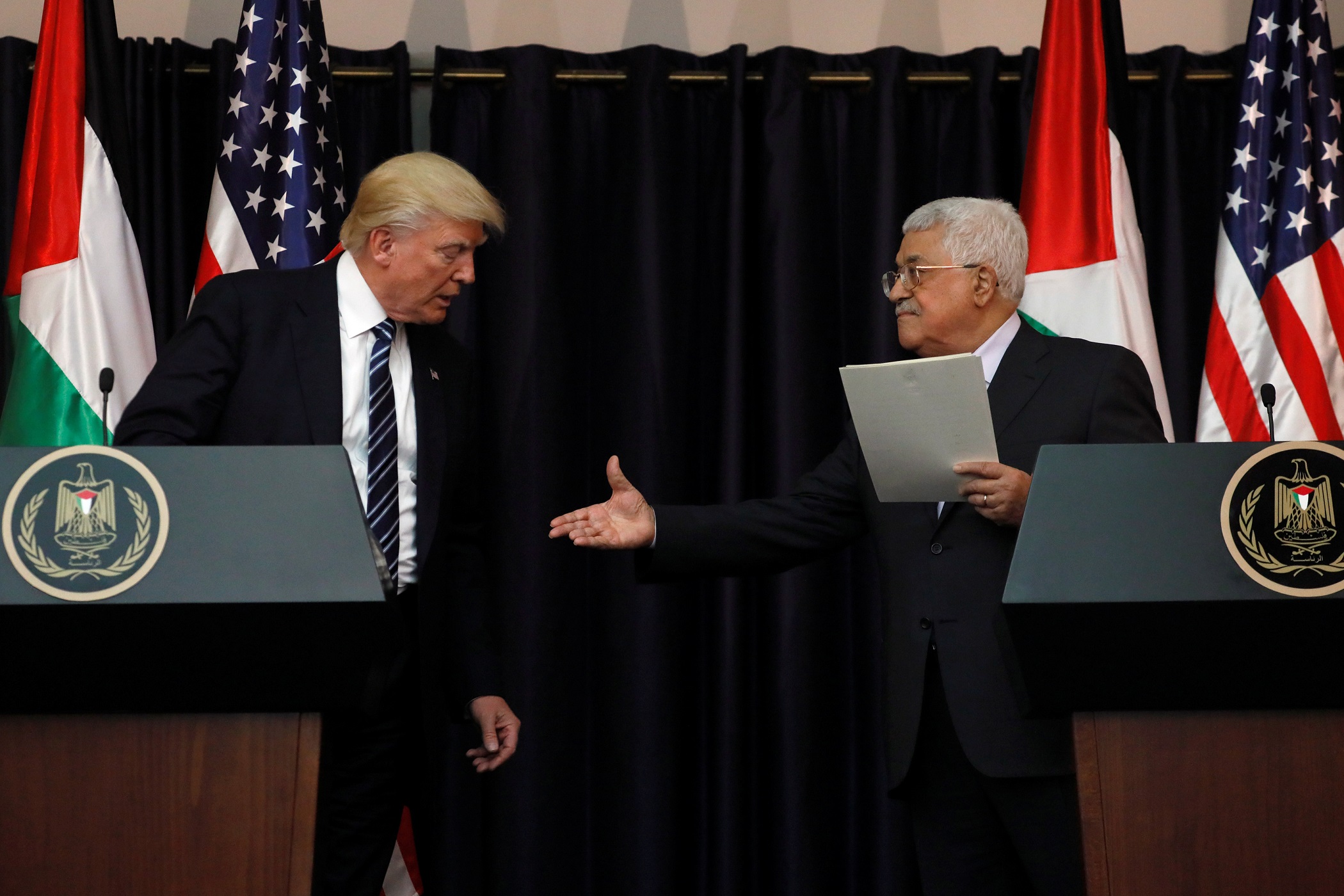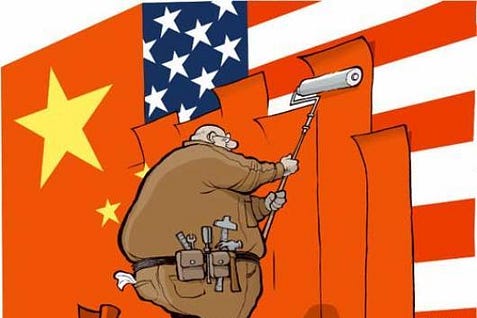 Twenty years later, in 303 B.C, when Seleukos Nikator, the conqueror, one of Alexander’s generals who had become king of Western Asia by then entered Punjab, faced a defeat from Chandragupta Maurya. This was the first time when a foreign army of importance was defeated in a full-scale battle. Chandragupta’s army was more classical and undoubtedly better organized than that of Poros, who was defeated by Alexander the Great. This victory reinforced a tradition of how an army should be organised and how a battle should be fought and influenced military warfare for the next two thousand years till Indian troops got trained by French and British forces brought in by merchants. Interestingly, much before Machiavelli who wrote a guide to statecraft called “ The Prince “ and was quite famous in Europe, India had its own master strategist “Kautilya” and his most brutal and ruthless guide of statecraft called “Ãrthãshãstrã”. According to him “Intelligence” is the most important both in times of war and peace and the use of spies for that is the must. The Commander-in-Chief will have an Inspector General for each of his four arms: Chariots, Cavalry, Elephants, Infantry.
Twenty years later, in 303 B.C, when Seleukos Nikator, the conqueror, one of Alexander’s generals who had become king of Western Asia by then entered Punjab, faced a defeat from Chandragupta Maurya. This was the first time when a foreign army of importance was defeated in a full-scale battle. Chandragupta’s army was more classical and undoubtedly better organized than that of Poros, who was defeated by Alexander the Great. This victory reinforced a tradition of how an army should be organised and how a battle should be fought and influenced military warfare for the next two thousand years till Indian troops got trained by French and British forces brought in by merchants. Interestingly, much before Machiavelli who wrote a guide to statecraft called “ The Prince “ and was quite famous in Europe, India had its own master strategist “Kautilya” and his most brutal and ruthless guide of statecraft called “Ãrthãshãstrã”. According to him “Intelligence” is the most important both in times of war and peace and the use of spies for that is the must. The Commander-in-Chief will have an Inspector General for each of his four arms: Chariots, Cavalry, Elephants, Infantry.25 May 2020
Evolution of Indian Warfare: A short note
 Twenty years later, in 303 B.C, when Seleukos Nikator, the conqueror, one of Alexander’s generals who had become king of Western Asia by then entered Punjab, faced a defeat from Chandragupta Maurya. This was the first time when a foreign army of importance was defeated in a full-scale battle. Chandragupta’s army was more classical and undoubtedly better organized than that of Poros, who was defeated by Alexander the Great. This victory reinforced a tradition of how an army should be organised and how a battle should be fought and influenced military warfare for the next two thousand years till Indian troops got trained by French and British forces brought in by merchants. Interestingly, much before Machiavelli who wrote a guide to statecraft called “ The Prince “ and was quite famous in Europe, India had its own master strategist “Kautilya” and his most brutal and ruthless guide of statecraft called “Ãrthãshãstrã”. According to him “Intelligence” is the most important both in times of war and peace and the use of spies for that is the must. The Commander-in-Chief will have an Inspector General for each of his four arms: Chariots, Cavalry, Elephants, Infantry.
Twenty years later, in 303 B.C, when Seleukos Nikator, the conqueror, one of Alexander’s generals who had become king of Western Asia by then entered Punjab, faced a defeat from Chandragupta Maurya. This was the first time when a foreign army of importance was defeated in a full-scale battle. Chandragupta’s army was more classical and undoubtedly better organized than that of Poros, who was defeated by Alexander the Great. This victory reinforced a tradition of how an army should be organised and how a battle should be fought and influenced military warfare for the next two thousand years till Indian troops got trained by French and British forces brought in by merchants. Interestingly, much before Machiavelli who wrote a guide to statecraft called “ The Prince “ and was quite famous in Europe, India had its own master strategist “Kautilya” and his most brutal and ruthless guide of statecraft called “Ãrthãshãstrã”. According to him “Intelligence” is the most important both in times of war and peace and the use of spies for that is the must. The Commander-in-Chief will have an Inspector General for each of his four arms: Chariots, Cavalry, Elephants, Infantry.Dear intellectuals, migrant workers will come back. Here are the five reasons
MANISH SABHARWAL and SABINA DEWAN
 The human tragedy of migrants continues but the rising crescendo of intellectual outrage surprises us. What did you anticipate? India’s labour market has behaved exactly as expected in a crisis, given its peacetime pre-existing conditions. Every doctor will tell you that the time for treating pre-existing conditions is not the emergency room but the decades before you need triage. Covid-19 is not a passing shower but climate change; it will force the structural reforms that will explode the creation of productive and better paid jobs.
The human tragedy of migrants continues but the rising crescendo of intellectual outrage surprises us. What did you anticipate? India’s labour market has behaved exactly as expected in a crisis, given its peacetime pre-existing conditions. Every doctor will tell you that the time for treating pre-existing conditions is not the emergency room but the decades before you need triage. Covid-19 is not a passing shower but climate change; it will force the structural reforms that will explode the creation of productive and better paid jobs.
Migrants will come back
While Covid makes short-term modelling impossible, will migrants be like PG Woodhouse’s cat who sat on a hot stove never to sit on a cold one again? Or will migrants recognise the wisdom of Urdu poetry, “Majboori hai saab, muskurana padta hai”? We’d like to challenge the noisy notion that migrants won’t come back based on five mitigating factors.
India has to come to terms with inequality: Thomas Piketty
Narayan Lakshman
If the catastrophic human toll of the ongoing COVID-19 pandemic was the first wave to strike the world this year, its severe economic consequences – including loss of livelihoods of the poor across countries, leading to massive internal displacement and starvation in many cases – have been the second wave.
It is in this context that the seminal work of Professor Thomas Piketty, Professor of Economics at Paris-based School of Advanced Studies in the Social Sciences and at the Paris School of Economics and Co-Director at the World Inequality Lab and World Inequality Database, on the phenomenon of economic inequality gains additional significance today.
He shared his perspective on this subject, including on its relevance to India, with Narayan Lakshman. Edited transcript:
Before jumping into an analysis of the current scenario, let us start with a fascinating idea that you explore in your latest book 'Capital and Ideology' – the notion of “participatory” socialism. Could you talk a bit about what it is, and how, if at all, you see it as an essential step to redress the ills of the free-market capitalism and globalisation that has overtaken almost every nation on earth?
Pakistan: An Emboldened Army and a Polarized Public
SHREYAS SHENDE
The coronavirus pandemic in Pakistan took root due to inadequate testing of travelers returning from Iran, including the country’s first confirmed case, a patient diagnosed in Karachi on February 26. The disease spread during March and then spiked in April as community transmission accelerated. As of May 20, Pakistan has reported 45,898 confirmed cases, including 985 deaths and 13,101 recovered patients. While Pakistan’s government aimed to conduct 25,000 tests a day by the end of April, to date, the highest number it has conducted is 14,818 on May 15.
One of the biggest challenges for Pakistan will be the economic impact of the virus. Less than a year ago, Pakistan was forced to comply with its thirteenth bailout agreement with the International Monetary Fund (IMF), which included a devaluation of the rupee and an increase in utility prices. In February, Pakistan’s economy had been showing certain positive, albeit limited, trends—such as reserves of the State Bank of Pakistan hitting a twenty-one-month high. Now, however, the World Bank expects Pakistan’s real GDP growth will contract by 1.3 percent in 2020 and reach only 0.9 percent in 2021 under its baseline scenario. Pakistan’s informal economy, accounting for 72 percent of employment, has weathered previous financial crises but will be hit particularly hard as tens of millions of workers, who rely on cash-based sectors to meet their daily demands, will see their movement, and the movement of goods, curtailed.
Shreyas Shende is a research assistant and executive assistant to the director at Carnegie India.
How and Why Idlib Defied its Jihadi Overlords
MANHAL BAREESH
INTRODUCTION
Over the past few years, Hayat Tahrir al-Sham (HTS), a Salafi-jihadi group led by Jabhat al-Nusra, Syria’s former al-Qaeda affiliate, has come to occupy a prominent position in northwestern Idlib Governorate. Idlib is the country’s last rebel-held bastion of any significance, although the Syrian regime began retaking large areas of the governorate toward the end of 2019. Idlib is populated by some 3 million people, half of whom are internally displaced, with HTS the strongest faction there. Even before the Syrian regime and its allies retook much of Idlib in a recent ground assault, they played up its association with hardline Islamists to justify a brutal air campaign against it. Much of the world accepted the regime’s assessment and acquiesced in its behavior, as evidenced by the inaction over large-scale air strikes on Idlib by the Syrian and Russian air forces, which resulted in numerous civilian casualties. This paved the way for the regime’s largely successful ground offensive.
Yet, insofar as the influence of hardline Islamists was concerned, the situation on the ground in Idlib and beyond was a good deal more complicated than it appeared. For one thing, HTS failed to penetrate major segments of society due to their functioning as closed groups. Moreover, locals translated their opposition to HTS, particularly its monopolistic economic practices and embodiment of a harsh strain of Islam, into action. In 2017 and 2018, the towns of Saraqeb, Maarat al-Numan, and Atareb held elections for local councils in open defiance of HTS, which considers such practices to be un-Islamic. Residents of these towns as well as those of Sarmada, Kafr Takharim, and Ariha also staged demonstrations in which they openly condemned HTS and called for its removal. Fearful of further eroding its standing, HTS increasingly avoided direct confrontation with locals.
HOW IDLIB JIHADIS LOST THEIR CACHET
Abbas Says Security Cooperation Will End, Raising Stakes for Israeli Annexation
JERUSALEM — Raising the stakes over Israel’s drive to annex land the Palestinians have long claimed, President Mahmoud Abbas of the Palestinian Authority on Tuesday angrily declared it free of its commitments under the Oslo peace process, including security understandings that have protected Israelis and preserved the authority’s political hold over the occupied West Bank.
For a change, several senior Palestinian officials insisted, Mr. Abbas was not making a mere threat.
“The Palestine Liberation Organization and the State of Palestine are absolved, as of today, of all agreements and understandings with the American and Israeli governments,” Mr. Abbas declared in a speech in Ramallah after a much-anticipated meeting of officials of the authority, the P.L.O. and Fatah, the political faction that dominates them both. Those understandings, he said, include all security agreements.
Mr. Abbas said his move was a response to the new Israeli government’s push to annex large portions of the West Bank.
Afghanistan's Peace Process Remains Precarious Despite the Signing of the U.S.-Taliban Deal
by Daniel R. DePetris
 Violence and brutality are nothing new in Afghanistan. But the attacks perpetrated on May 12 were especially heinous, even by the standard of this war-scarred country.
Violence and brutality are nothing new in Afghanistan. But the attacks perpetrated on May 12 were especially heinous, even by the standard of this war-scarred country.
The first, an ambush against a maternity ward in a Kabul-based hospital, left twenty-four people dead—many of them were new mothers. The second occurred over one hundred miles away in the Eastern Afghan province of Nangarhar, where an Islamic State suicide bomber detonated his explosives at a funeral. The two attacks shocked Afghans, convinced Afghan President Ashraf Ghani to resume offensive operations, and led his national security adviser to question whether peace talks with the Taliban were worth the effort.
The two attacks, however, also confirm what a majority of Americans already believe: the costs of continuing a U.S. military presence in Afghanistan heavily outweigh the benefits. Thousands of U.S. troops are essentially stuck in the middle of a civil war they neither have the capacity or responsibility to solve.
Afghanistan’s security situation has remained precarious despite the signing of the U.S.-Taliban agreement on February 29. The accord was designed to limit violence in the country’s major population centers, facilitate the mutual release of prisoners, and prepare the Afghan government and the Taliban for long and acrimonious discussions about Afghanistan’s political future.
The fantasy of “Global Power”: China’s Media Machinery
In his compelling military treatise “The Art of War” Sun Tzu, a famous Chinese military general of 6th Century B.C. (512 BC) quotes “Mystify, Mislead and Surprise your Enemy” then attack and “Warfare is all about Deception”. Recently, with the departure of Chinese president Xi Jinping after his bilateral meeting with Prime Minister Narendra Modi, the electronic, print and social media got bombarded with commentaries and articles doing post-mortem analysis of bonhomie and diplomacy between two leaders forecasting consequences on different international platforms including economic, trade, visa, cultural exchange and investment by leading security, foreign policy and business analysts. Amid all this discussions and diplomacy, in a strange departure from its past precedents, India subtly denied support for “ONE CHINA” policy. Instead, it asked her eastern neighbour that it should first accept and adhere to “ONE INDIA” policy in return of India’s support. It was a noticeable change in tone for China which tends to seek clarification and asks foreign leaders to speak for “ONE CHINA” policy publicly.
In China’s Crisis, Xi Sees a Crucible to Strengthen His Rule
Before an adulatory crowd of university professors and students, China’s leader, Xi Jinping, offered a strikingly bold message about the global coronavirus pandemic. Summoning images of sacrifice from Communist Party lore, he told them that the calamity was ripe with possibility for China.
“Great historical progress always happens after major disasters,” Mr. Xi said during a recent visit to Xi’an Jiaotong University. “Our nation was steeled and grew up through hardship and suffering.”
Mr. Xi, shaped by his years of adversity as a young man, has seized on the pandemic as an opportunity in disguise — a chance to redeem the party after early mistakes let infections slip out of control, and to rally national pride in the face of international ire over those mistakes. And the state propaganda machine is aggressively backing him up, touting his leadership in fighting the pandemic.
The Coming Post-COVID Anarchy
By Kevin Rudd
 In January and February of this year, there was audible popping of champagne corks in certain quarters of the U.S. foreign policy establishment. What some observers had long seen as this era’s giant geopolitical bubble had finally begun to deflate. China’s Communist Party leadership, the thinking went, was at last coming apart, a result of its obsession with official secrecy, its initial missteps in responding to the novel coronavirus outbreak, and the unfolding economic carnage across the country.
In January and February of this year, there was audible popping of champagne corks in certain quarters of the U.S. foreign policy establishment. What some observers had long seen as this era’s giant geopolitical bubble had finally begun to deflate. China’s Communist Party leadership, the thinking went, was at last coming apart, a result of its obsession with official secrecy, its initial missteps in responding to the novel coronavirus outbreak, and the unfolding economic carnage across the country.
Then, as China began to recover and the virus migrated to the West in March and April, irrational jubilation turned to irrational despair. The commentariat greeted with outrage any possibility that the pandemic might in fact help China emerge triumphant in the ongoing geopolitical contest with the United States. This concern was a product of China’s seemingly cunning remolding of the narrative on the origins of the virus, the brutal efficiency of the Chinese authoritarian model in containing it, and Beijing’s global COVID-aid campaign. China’s own nationalist commentariat happily piled on, delighting in the United States’ distress and noting the supposed contrast between Chinese largesse and American indifference: the “people’s war” against COVID-19 had been won, and the virtues of China’s political model had been vindicated.
On Point: 2030 Scenario: US Navy Robots, Carriers and Mines Counterattack China
For at least two decades, U.S. military strategists and planners have pondered this complex question: how to lower the physical risks to ships and crews a U.S. Navy carrier battle group and other surface forces face as they approach a hostile Chinese coast.
In 1996, as Beijing threatened Taiwan with a rain of missiles, a Navy nuclear carrier battle group sailed toward the island -- with impunity.
However, communist China's military modernization program has developed and deployed weapon systems that increase the peril U.S. and allied fleets confront. Some Chinese air and missile systems may be able to successfully attack U.S. surface vessels 1,200 miles away. The threat to allied submarines has also increased.
In the last week, defense writers have published sensational reports regarding a recent U.S. defense establishment war game (conflict simulation) set in the year 2030.
Some pertinent background: For four years I served as a special consultant in war gaming in the Office of the Secretary of Defense. War games are at best informative explorations of possible future events and potential outcomes based on player decisions made during the game.
A guide to thriving in the post-COVID-19 workplace
 Even before COVID-19, many workers around the globe lacked key skills - including digital capabilities.
Even before COVID-19, many workers around the globe lacked key skills - including digital capabilities.
Upskilling in preparation for the changes to come post-COVID-19 should be a critical part of response and recovery.
There are four steps workers and businesses can take today to prepare for tomorrow: Accelerate the move to platform, transition to digital/virtual work, assess your skillset and expand it as needed, and plan for the future.
The pandemic has accelerated the need to ensure that people around the globe have the necessary technology skills and access to do their jobs. Even as China shows signs of recovery and the number of new daily infections worldwide appears to have stabilized, the US has seen an unprecedented number of people file for unemployment, and 57% of Americans surveyed recently report feeling worried about losing their jobs.
The current picture is bleak — and many parts of the world still haven’t felt the pandemic's full impact. However, recovery will come, so what should individuals be doing to make sure they can come back to the workforce stronger?
Shoring up skills
Chinese cyberattacks show need for security in post-lockdown era
GARRY WHITE
 Australia is a giant kangaroo that serves as a dog of the United States. That’s according to a letter published this week in the Chinese state-run tabloid The Global Times.
Australia is a giant kangaroo that serves as a dog of the United States. That’s according to a letter published this week in the Chinese state-run tabloid The Global Times.
Australia’s successful push for an “impartial, independent and comprehensive evaluation” of the international response to Covid-19, which was agreed by the World Health Organisations (WHO’s) Health Assembly this week, has caused Beijing to bristle.
It has deployed its two main weapons – trade restrictions and cyberattacks. The latter of these is more significant.
Accusations of cyberattacks by China on its foes are becoming common. The biggest battle front in the new Cold War between the West and China looks set to be fought online, making cybersecurity one of the most important growth areas in technology over the next few years....
How Israeli Annexation Talk Is Already Reshaping the Middle East
TEL AVIV, Israel—With Israel weighing whether to annex parts of the West Bank in the coming months, Palestinian President Mahmoud Abbas announced Tuesday that his self-governing administration in Ramallah would no longer be bound by existing agreements with the Jewish state, including security cooperation, in what could be the beginning of a violent spiral in the region.
Other Arab leaders have also warned Israel against annexing any West Bank territory, including Jordan’s King Abdullah II, who said last week that Israel was on course for a “massive conflict” with his country.
While annexation could be months off—and might not happen at all—the responses from the two leaders who stand to be affected most by any Israeli move underscored just how sensitive the issue is, even after more than 50 years of Israeli occupation of the territory.
“The Palestine Liberation Organization and the State of Palestine are absolved, as of today, of all the agreements and understandings with the American and Israeli governments and of all the obligations based on these understandings and agreements, including the security ones,” Abbas said at a meeting for the Palestinian leadership in Ramallah, according to the official Wafa news agency.
Israel Hack of Iran Port Is Latest Salvo in Exchange of Cyberattacks
TEL AVIV — Israel was behind a cyberattack on May 9 that disrupted operations at a major port in Iran, according to high-ranking intelligence officials and experts in the Middle East who are kept informed of covert Israeli actions in the region.
The attack on the computer systems at the Shahid Rajaee port in the strategically important Strait of Hormuz was limited in scope, creating traffic jams of delivery trucks and some delays in shipments, but causing no substantial or lasting damage.
Israel and Iran have recently been engaged in an exchange of attempted and successful cyberattacks, and the purpose of Israel’s relatively small-scale effort at the port, according to intelligence officials, was to send a message to Tehran: Don’t target Israeli infrastructure.
The hacking of the port’s computers came in direct response, those experts familiar with the decision-making process said, to a failed Iranian cyberattack on an Israeli water facility last month.
Officials in Israel initially decided the country should not retaliate for the attack on the water system, according to the intelligence sources, because its effect would have been minor even if it had succeeded.
The Irish Shock to U.S. Manufacturing?
by Brad W. Setser
America’s production of pharmaceuticals and medicines peaked in 2006, back before the global financial crisis. Output now is about 20 percent below its 2006 level.
Pharmaceuticals tend to be capital not labor intensive. High quality pharmaceuticals aren’t made in sweat shops. Pharmaceuticals certainly weren’t the kind of industry that most economists expected to be on the losing end of trade liberalization twenty years ago.

The Future of the Dollar
By Henry M. Paulson Jr
 In late March, global financial markets were collapsing amid the chaos of the novel coronavirus pandemic. International investors immediately sought refuge in the U.S. dollar, just as they had done during the 2008 financial crisis, and the U.S. Federal Reserve had to make huge sums of dollars available to its global counterparts. Seventy-five years after the end of World War II, the primacy of the dollar has not waned.
In late March, global financial markets were collapsing amid the chaos of the novel coronavirus pandemic. International investors immediately sought refuge in the U.S. dollar, just as they had done during the 2008 financial crisis, and the U.S. Federal Reserve had to make huge sums of dollars available to its global counterparts. Seventy-five years after the end of World War II, the primacy of the dollar has not waned.
The enduring dominance of the dollar is remarkable—especially given the rise of emerging markets and the relative decline of the U.S. economy, from nearly 40 percent of world GDP in 1960 to just 25 percent today. But the dollar’s status will be tested by Washington’s ability to weather the COVID-19 storm and emerge with economic policies that allow the country, over time, to manage its national debt and curb its structural fiscal deficit.
The stature of the dollar matters. The dollar’s role as the primary global reserve currency makes it possible for the United States to pay lower rates on dollar assets than it otherwise would. Equally significant, it enables the country to run larger trade deficits, reduces exchange-rate risk, and makes American financial markets more liquid. Finally, it favors U.S. banks because of their enhanced access to dollar funding.
Drugs and Vaccines Are Coming—But to Whom?
By Jennifer Hillman
 The rush is on to come up with a viable vaccine against COVID-19, the disease caused by the new coronavirus. Scores of academic institutions and companies around the world are hard at work, and at least eight vaccine candidates have reached or are approaching the clinical trial stage. Oxford University’s Jenner Institute is currently leading the race and due to start large-scale human trials by the end of May. This week, a Massachusetts-based biotech firm, Moderna, announced that its coronavirus vaccine had safely produced protective antibodies in human volunteers in early-stage testing.
The rush is on to come up with a viable vaccine against COVID-19, the disease caused by the new coronavirus. Scores of academic institutions and companies around the world are hard at work, and at least eight vaccine candidates have reached or are approaching the clinical trial stage. Oxford University’s Jenner Institute is currently leading the race and due to start large-scale human trials by the end of May. This week, a Massachusetts-based biotech firm, Moderna, announced that its coronavirus vaccine had safely produced protective antibodies in human volunteers in early-stage testing.
A similar push is on to develop antiviral drugs and other therapeutics—and to repurpose existing ones—to treat those infected with the coronavirus. By mid-April, in the United States alone, 950 drug development proposals had been submitted to the Food and Drug Administration for approval, and more than 70 COVID-19 medication trials were underway. The pace is remarkable: vaccines and new medicines normally take at least a decade to develop and test, but intensive global research efforts have brought a vaccine into realistic reach within 18 months and revealed some promising potential lines of treatment.
Sydney Wignall
Sydney Wignall
FEW things annoyed Sydney Wignall more than the thought that the world's least accessible places were divided up among the great powers. To go where he wanted among the wilds and snows—to cross that pass undetected, to find lakes unmarked on charts, to see what lay on the other side of the hill—was a fever in him. He longed “to make indelible marks on history, or preferably on the blank areas of maps”. Among the various motives that led him to launch the first Welsh Himalayan Expedition, trundling out of Llandudno in 1955 in two Standard Vanguard estate cars painted brightly in the national colours, was the urge to thumb his nose at China and its pretensions to govern large areas of those mountains. The flags he intended to plant on Gurla Mandhata, 25,300 feet high and straddling unmapped Nepal and Tibet, included not only the red dragon of Wales and the blue pennant of the UN, but the skull and crossbones, in honour of swashbuckling and privateering. He also took a loaded pistol.
He had done no Alpine climbing; Snowdonia was the limit of his experience. Nonetheless, in those heady days just after the conquest of Everest, the British thought they could master any mountain with enough pluck and Kendal Mint Cake. And so they might have done, if the Chinese had not insisted they owned the territory. Mr Wignall and his team had no sooner started on the final climb than they were captured by thuggish, quilted soldiers of the PLA and taken off to jail.
DOD’s Top Scientist Shoots Down Airborne Lasers for Missile Defense
 Could lasers aboard aircraft like the F-35 shoot down enemy missiles as they launch? The Pentagon has batted around the idea for decades. But on Wednesday, its top scientists said he doesn’t think it’s practical, and said the Defense Department will put its research resources elsewhere.
Could lasers aboard aircraft like the F-35 shoot down enemy missiles as they launch? The Pentagon has batted around the idea for decades. But on Wednesday, its top scientists said he doesn’t think it’s practical, and said the Defense Department will put its research resources elsewhere.
“I want to put an end to that discussion. We’re not investing in airborne platforms for shooting down adversary missiles” with directed energy, said Mike Griffin, defense undersecretary for research and engineering.
The idea of mounting a laser or other directed-energy weapon on a fighter jet or drone for missile defense has surfaced and disappeared various times. Early last year, it resurfaced in the 2019 Missile Defense Review, the bible for U.S. missile defense. “Developing scalable, efficient, and compact high energy laser technology, and integrating it onto an airborne platform holds the potential to provide a future cost-effective capability to destroy boosting missiles in the early part of the trajectory,” reads the Review, the bible for U.S. missile defense. “Doing so would leverage technological advances made earlier in DoD’s Airborne Laser Program, including for example advances in beam propagation and beam control. MDA is developing a Low-Power Laser Demonstrator to evaluate the technologies necessary for mounting a laser on an unmanned airborne platform to track and destroy missiles in their boost-phase.”
A Palestinian Perspective on President Trump’s Peace Plan
 This article highlights the need for the Palestinian leadership to make a counterproposal or present the reasons why it objects to President Trump’s peace vision, which was unveiled in January 2020. Even the most vehement Palestinian rejection of the plan may not stop the implementation of certain aspects of the vision – such as the possible annexation of the Jordan Valley, all Israeli settlements, and other parts of the West Bank and East Jerusalem. Therefore, it is in the best interests of the Palestinians, represented by the Palestinian Authority, to come forth with a proposal of their own regarding an acceptable peace agreement with Israel. Indeed, Palestinians can no longer afford to continue waging a “holy” war against President Trump. In fact, President Trump can be an invaluable ally for the Palestinians if he is approached differently and treated properly.
This article highlights the need for the Palestinian leadership to make a counterproposal or present the reasons why it objects to President Trump’s peace vision, which was unveiled in January 2020. Even the most vehement Palestinian rejection of the plan may not stop the implementation of certain aspects of the vision – such as the possible annexation of the Jordan Valley, all Israeli settlements, and other parts of the West Bank and East Jerusalem. Therefore, it is in the best interests of the Palestinians, represented by the Palestinian Authority, to come forth with a proposal of their own regarding an acceptable peace agreement with Israel. Indeed, Palestinians can no longer afford to continue waging a “holy” war against President Trump. In fact, President Trump can be an invaluable ally for the Palestinians if he is approached differently and treated properly.
The purpose of this article is to highlight the need for the Palestinian leadership to make a counterproposal or present the reasons why it objects to Trump’s peace vision that was unveiled in January 2020. Even the most vehement Palestinian rejection of the plan may not stop the implementation of certain aspects of the vision – such as the possible annexation of the Jordan Valley, all Israeli settlements, and other parts of the West Bank and East Jerusalem. These developments, should they occur, will have long term and foreseeably irreversible adverse effects on the future prospects of a sovereign and viable Palestinian state.
Let Russia’s Planes Keep Flying Over US, Just Like Ike Wanted
President Dwight D. Eisenhower had a decision to make after the Soviet Union launched Sputnik. He could accept the Kremlin’s right to traverse space above the United States or resolve to deny this form of intelligence gathering through military means. Ike chose to accept increased transparency rather than place future leaders of both countries on a collision course toward warfare in space.
Ike made this choice over the misgivings of senior military officers, but his reasoning was sound: The Soviet Union was a closed society, and U.S. policy makers and intelligence officials would have more to gain than to lose by accepting mutual transparency. Using this same logic, Ike also proposed an “Open Skies” agreement for cooperative aerial observation flights, but this was unacceptable to the Kremlin.
When Mikhail Gorbachev tried to reform the Soviet Union through glasnost, or openness, President George H.W. Bush revived Ike’s idea of Open Skies. Gorbachev — who had already permitted foreign observers at Soviet military exercises and responded to Ronald Reagan’s “trust but verify” challenge by accepting intrusive missile inspections — allowed negotiations to proceed. It took more than a decade, but in 2002, 45 years after Ike’s proposal, the Open Skies Treaty went into effect. Cooperative aerial observation flights began from Vancouver all the way to Vladivostok.
Contact-tracing apps face serious adoption obstacles
 If public-health authorities’ worst predictions come true, COVID-19 may never disappear. That means the world will have to live with the virus and develop effective treatments and measures to contain the virus.
If public-health authorities’ worst predictions come true, COVID-19 may never disappear. That means the world will have to live with the virus and develop effective treatments and measures to contain the virus.
Mobile contact-tracing technology has emerged as one such measure to track population movements and alert individuals when they come into contact with an infected person. But such technology faces enormous obstacles. In order for such tools to be effective, some 60 percent of the population needs to opt-in and use them. With the novel coronavirus continuing to spread in the United States and major American universities and technology companies actively developing digital contact-tracing tools, understanding whether the American people would be willing to use such technology to stem the outbreak has never been more important.
But Americans continue to be deeply skeptical of such technology. In a nationally representative study of 2,000 Americans between April 30 and May 1, 2020, we found that just over 30 percent of Americans indicated they would download and use a mobile contact-tracing app, raising questions about whether such technology will be adopted widely enough to be effective. In a bit of good news for developers, support among Americans for digital contact tracing tends to increase with stronger privacy protections.
Pentagon’s AI Center Awards $800M Contract Through GSA Center of Excellence Program
Through its partnership with the General Services Administration’s Centers of Excellence, the Defense Department’s central artificial intelligence program signed an $800 million contract with Booz Allen Hamilton for AI-powered warfighter support tools.
The Joint Artificial Intelligence Center, or JAIC, issued a five-year task order—awarded through GSA’s Alliant 2 governmentwide acquisition contract—to “deliver artificial intelligence-enabled products to support warfighting operations and be instrumental in embedding AI decision-making and analysis at all tiers of DoD operations,” according to a release Monday.
Booz Allen Hamilton will focus on identifying and integrating advanced analytical tools with existing DOD datasets to create “a definitive information advantage to prepare for future warfare operations.” The work will include “data labeling, data management, data conditioning, AI product development, and the transition of AI products into new and existing fielded programs and systems across the DoD.”
“The Joint Warfighting mission initiative will provide the Joint Force with AI-enabled solutions vital to improving operational effectiveness in all domains,” JAIC Director Lt. Gen. Jack Shanahan said in the statement. “This contract will be an important element as the JAIC increasingly focuses on fielding AI-enabled capabilities that meet the needs of the warfighter and decision-makers at every level.”
NSO Group Impersonated Facebook to Help Clients Hack Targets
Infamous Israeli surveillance firm NSO Group created a web domain that looked as if it belonged to Facebook's security team to entice targets to click on links that would install the company's powerful cell phone hacking technology, according to data analyzed by Motherboard.
It is not uncommon for hackers working for governments to impersonate Facebook, perhaps with a phishing page that displays a Facebook login screen but which secretly steals a target's password. But NSO's approach complicates its ongoing conflict with the tech giant. NSO is currently embroiled in a lawsuit with Facebook, which is suing the surveillance firm for leveraging a vulnerability in WhatsApp to let NSO clients remotely hack phones. Motherboard has also found more evidence that NSO used infrastructure based in the United States; a server used by NSO's system to deliver malware was owned by Amazon.
A former NSO employee provided Motherboard with the IP address of a server setup to infect phones with NSO's Pegasus hacking tool. Motherboard granted the source anonymity to protect them from retaliation from the company. Pegasus can target modern iPhone and Android devices, and once installed on a device it can steal text and social media messages, track the GPS location of the phone, and remotely turn on the camera and microphone. NSO sells Pegasus in either 0- or 1-click versions, with the former needing no interaction from the target, and the latter requiring the target to click a link.
Subscribe to:
Posts (Atom)









